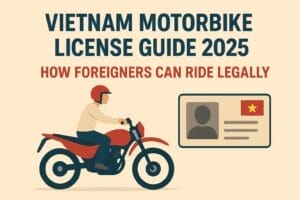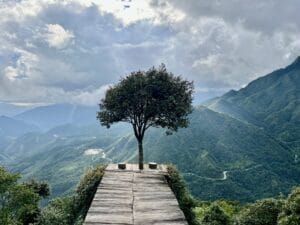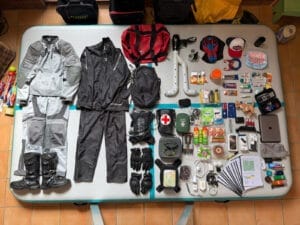6-Day North Vietnam Offroad Motorbike Tour to Ba Be Lake, Ha Giang, Dong Van, Sapa, and Thac Lake
Accommodations for motorbike tours In Vietnam cater to a diverse range of preferences and budgets. Whether you’re looking for luxury hotels, budget-friendly hostels, or immersive homestays, Vietnam has something to offer for every type of traveler. Here are some general points about accommodation options in Vietnam:
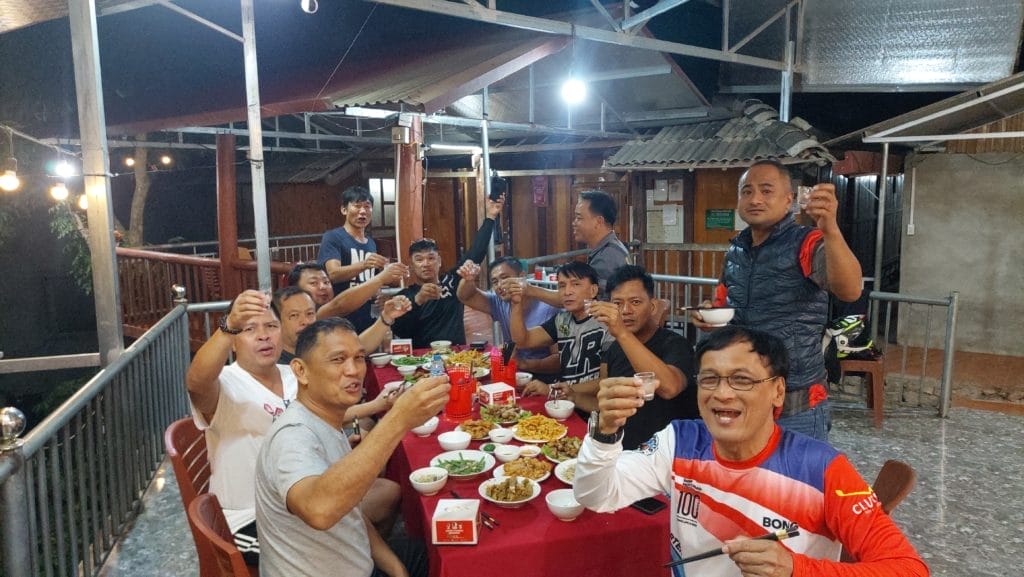
1.1. Hotels:
Vietnam has a wide array of hotels ranging from budget to luxury. Major cities like Hanoi, Ho Chi Minh City, and Da Nang feature internationally recognized hotel chains alongside local establishments.
Luxury hotels often provide high-end amenities, including spas, fine dining, and rooftop bars, while budget hotels offer comfortable and affordable stays.
1.2. Hostels:
Hostels are prevalent in popular tourist destinations and cities, providing budget-conscious travelers with shared dormitories or private rooms.
They are an excellent choice for backpackers and those looking for a social atmosphere, often hosting communal spaces for interaction among guests.
1.3. Guesthouses:
Guesthouses, often family-run establishments, are found throughout Vietnam. They offer a more personal touch and a chance to interact with locals.
Guesthouses are commonly available in both urban and rural areas, providing a diverse range of experiences.
1.4. Homestays:
Homestays provide a unique opportunity to stay with local families, offering an immersive cultural experience. They are prevalent in rural areas and ethnic minority villages.
Guests often have the chance to participate in daily activities, taste local cuisine, and learn about the traditions of the host community.
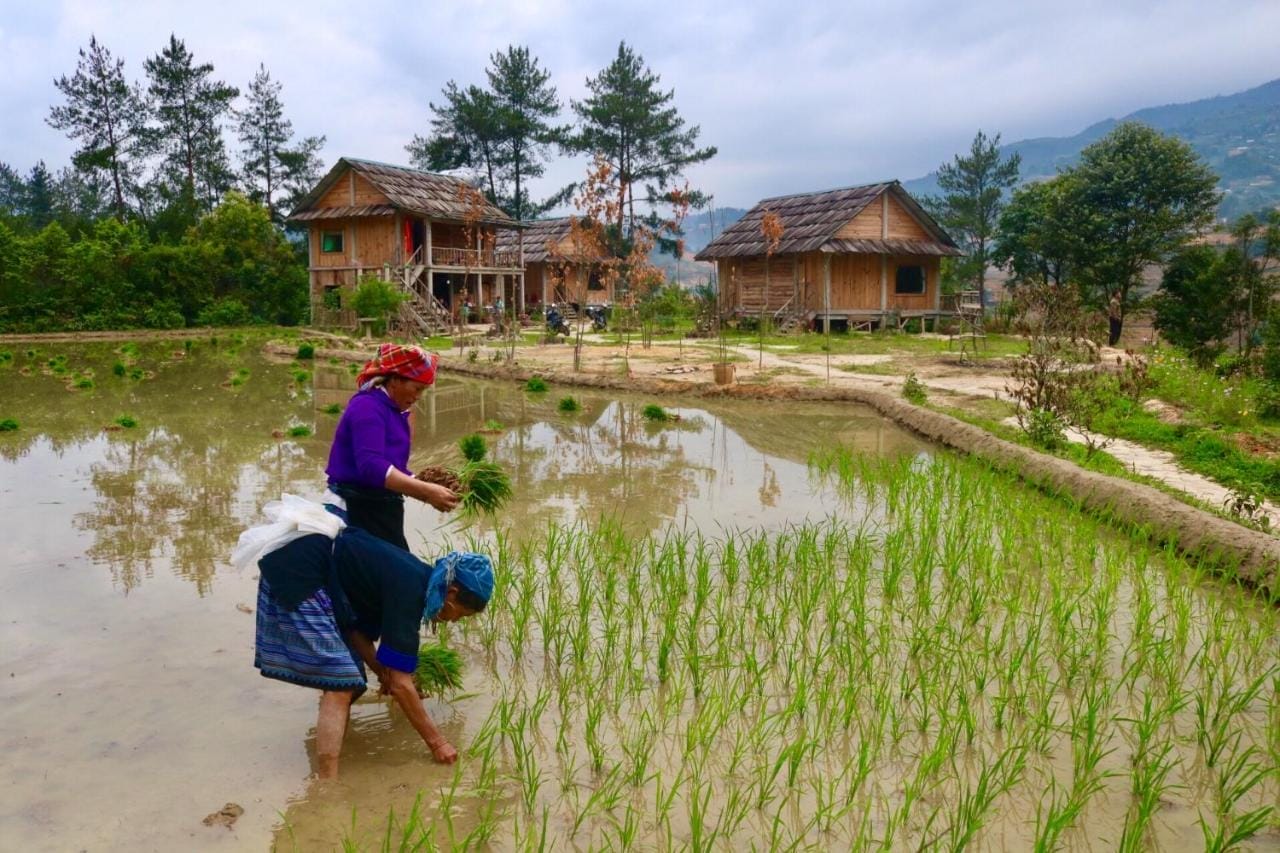
1.5. Resorts:
Coastal areas such as Nha Trang, Phu Quoc, and Mui Ne are known for their beach resorts. These establishments offer a luxurious experience with beachfront access and a variety of recreational activities.
1.6. Boutique Hotels:
Boutique hotels are increasingly popular in Vietnam, particularly in urban areas. They often feature unique designs, personalized service, and a distinctive atmosphere.
1.7. Eco-Lodges:
As eco-tourism gains traction, you can find eco-friendly lodges in natural and remote locations. These accommodations prioritize sustainability and a connection with nature.
1.8. Airbnb and Vacation Rentals:
In urban centers, Airbnb and other vacation rental platforms offer apartments and houses for short-term stays. This option provides a more independent and home-like experience.
1.9. Capsule Hotels:
Capsule hotels, characterized by compact pod-like rooms, are available in some urban areas like Ho Chi Minh City. They offer a unique and efficient lodging experience.
When choosing accommodation in Vietnam, consider factors such as location, budget, and the type of experience you seek. Booking in advance, especially during peak tourist seasons, is advisable. The country’s hospitality industry is diverse and evolving, ensuring that visitors can find suitable options for their preferences and travel styles.
However, in this article, we’ll be focussing on highlighting some major spots relating to the accommodations at some typical regions & main tourist destinations like Ha Giang, Sapa, Moc Chau, Cao Bang, Mai Chau …
2. Features of Accommodations in the North of Vietnam:
Specifically, Northern Vietnam is a large mountainous region and some of the less visited places do not have good accommodation on offer. The quality of accommodation in these areas is slightly lower with a more limited range of services than the ones in Hanoi or other big cities. In remote provinces there aren’t any luxury hotels. This will change slowly over time, and some luxury hotels will grow up. Airbnb also works in Vietnam. For example you can find a lot of very high-quality and affordable accommodation with host families in Hanoi.
Besides rooming services, almost accommodations here can also provide guests other additional services such as Excursions, hikes, treks, laundry, rent a bicycle, motorcycle or guide. Ask questions and communicate if at first it does not seem they offer something. The cheaper versions of guesthouses or hostels often don’t have any food. That said it shouldn’t be a problem as you can buy food on every street in the town.
Hotels, resorts & guesthouses in the northern Vietnam might be not much different from the ones in cities except for the in-door services and people can easily arrange themselves by booking directly from Agoda/booking/Expedia/AirBnB … however, probably we must share more details about a typical & unique accommodation in the north, that is traditional homestay to experience the daily life of local residents.
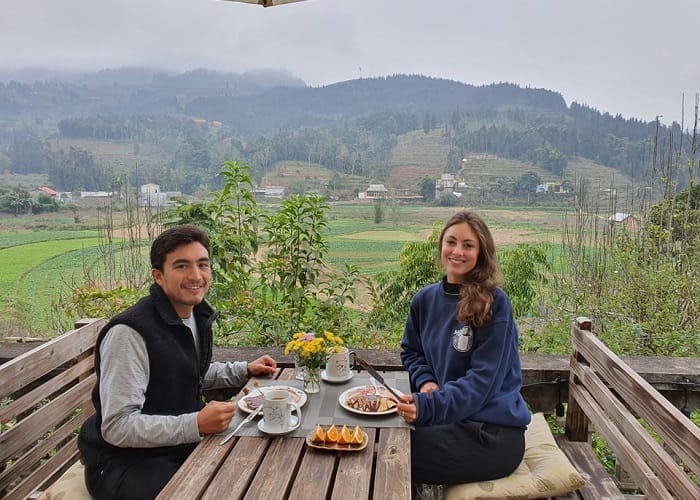
So literally the homestay accommodation in the mountainous areas of northern Vietnam means that you live with a local family and share their house with them. There are modified forms of homestay accommodation specially for tourists (they have a shower, toilet, Wifi or even TV) or you can try real homestay in villages with the ethnic minorities (they do not have these amenities). If you want to see the daily and village life of the ethnic minorities for real, you need to try a homestay. It is a great experience! Homestay also offers the chance to meet other local people from Vietnam eg.
2.1. Where to stay in Sapa?
Sapa is a picturesque town located in the Lào Cai Province in the northern part of Vietnam. It’s situated in the Hoang Lien Son mountain range near the border with China. Sapa is renowned for its stunning landscapes, rich cultural diversity, and opportunities for trekking and adventure. When deciding where to stay in Sapa, consider the following areas:
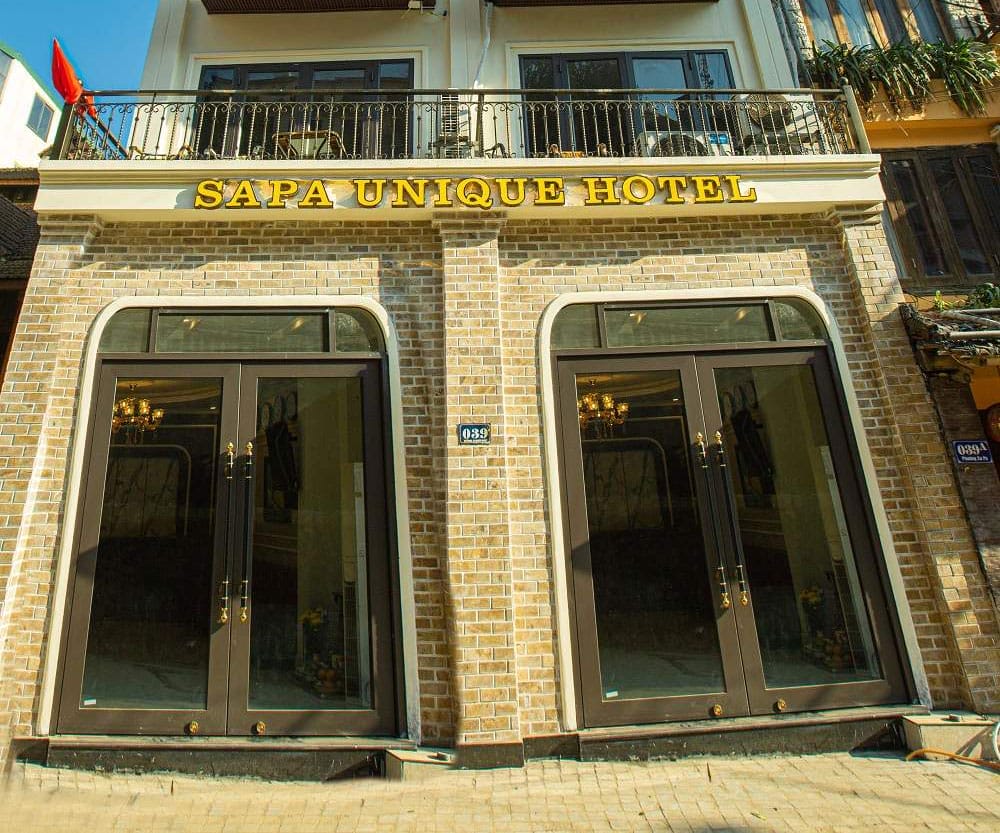
2.1.1. Sapa Town Center:
This is the main hub of Sapa where you’ll find a variety of accommodations, including hotels, guesthouses, and homestays.
Staying in the town center provides easy access to markets, restaurants, and the convenience of exploring nearby attractions on foot.
2.1.2. Ham Rong Street:
ad Rong Street is in the heart of Sapa town and offers a range of accommodation options. It’s a lively area with shops, restaurants, and cafes.
Staying here provides a central location and proximity to the Ham Rong Mountain and its botanical gardens.
2.1.3. Cat Cat Village Area:
Cat Cat Village is a short trek downhill from Sapa town. It’s known for its H’mong ethnic community and terraced rice fields.
Some accommodations are located in the Cat Cat area, offering a quieter environment and the opportunity to experience local culture.
2.1.4. Muong Hoa Valley:
For those seeking a more tranquil setting, consider accommodations in the Muong Hoa Valley. This area provides stunning views of terraced rice fields and access to trekking trails.
Some hotels and resorts in this valley offer a peaceful retreat away from the bustling town center.
2.1.5. Ta Van Village:
Ta Van is a beautiful village located about 10 kilometers from Sapa town. It’s known for its ethnic diversity, including H’mong, Giay, and Red Dao communities.
Staying in Ta Van offers a more immersive experience in local life, and you can find homestays and guesthouses here.
2.1.6. Lao Chai and Ta Phin Villages:
These villages, like Ta Van, provide opportunities for cultural immersion. Lao Chai is known for its H’mong population, while Ta Phin is home to the Red Dao.
Accommodations in these villages are often traditional homestays, allowing you to experience the daily life of the local communities.
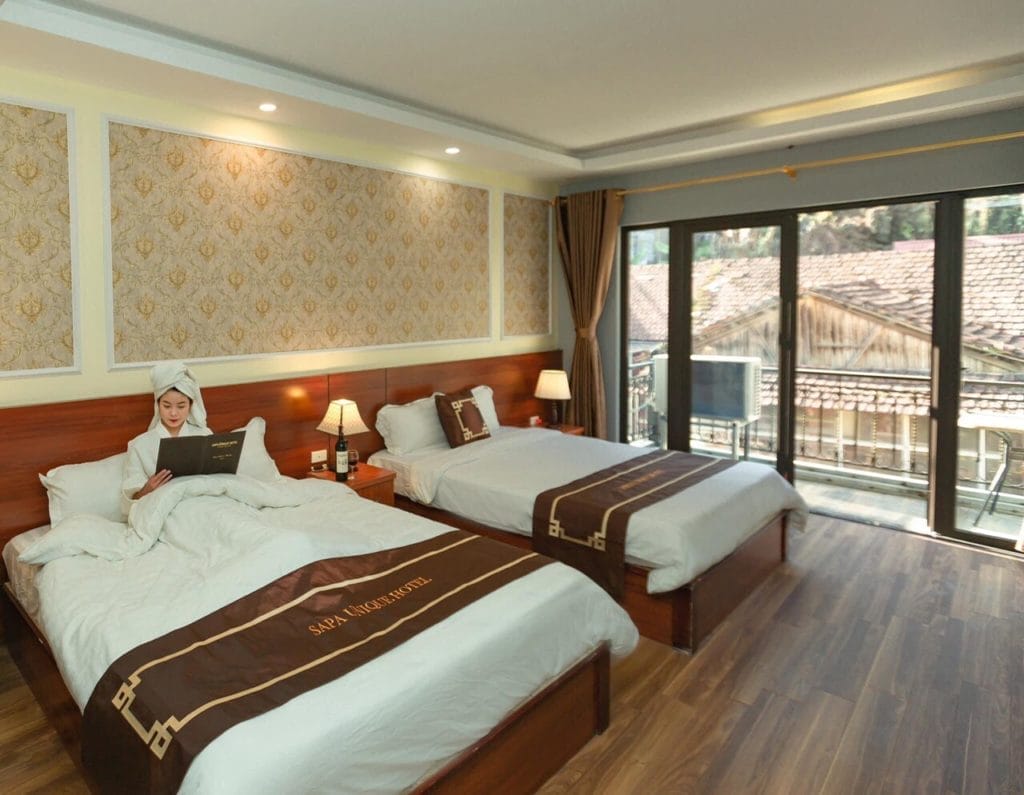
When choosing where to stay in Sapa, consider your preferences for scenery, activity level, and cultural experiences. Whether you prefer the convenience of the town center or the serenity of the surrounding villages, Sapa offers a range of accommodation options to suit various tastes and budgets. It’s advisable to book in advance, especially during peak tourist seasons, to secure your preferred choice.
2.2. Where to stay in Ha Giang:
Ha Giang is a province in the far northern region of Vietnam, known for its spectacular landscapes, diverse ethnic cultures, and a sense of adventure that beckons travelers seeking off-the-beaten-path experiences. Ha Giang offers a variety of accommodation options, ranging from budget guesthouses to more comfortable hotels. The choice of where to stay depends on your preferences, budget, and the type of experience you’re seeking. Here are some areas and types of accommodations to consider in Ha Giang:
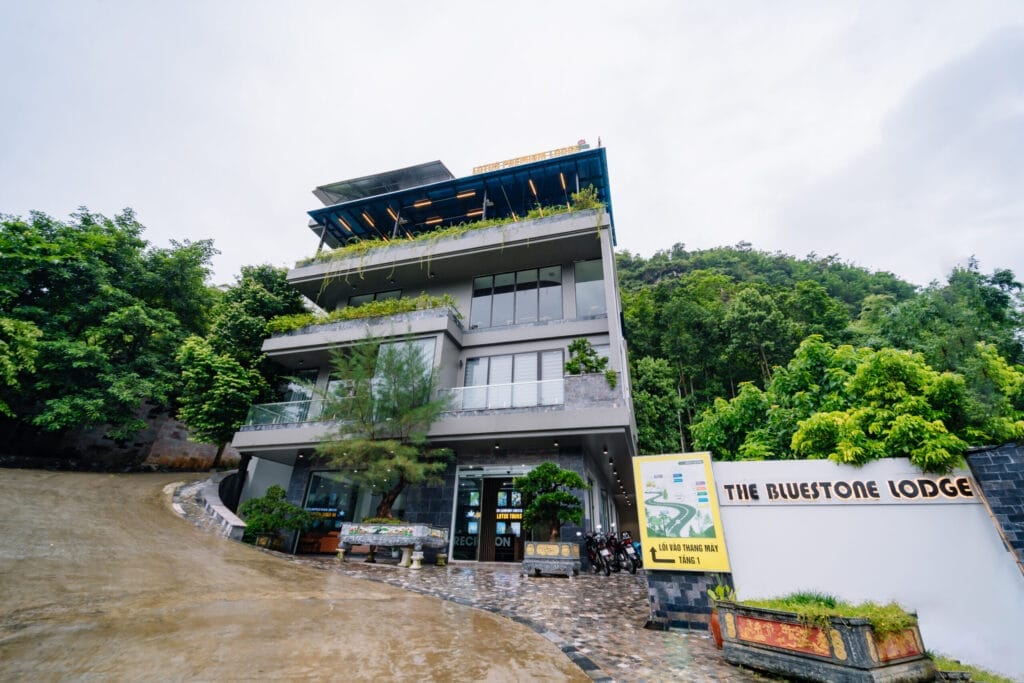
2.2.1. Ha Giang City:
The provincial capital, Ha Giang City, has a range of hotels and guesthouses that cater to different budgets. Staying in the city provides convenient access to local amenities, markets, and restaurants.
2.2.2. Dong Van Town:
Dong Van, one of the towns along the Ha Giang Loop, has accommodation options, including hotels and guesthouses. It’s a charming town with historical architecture, and staying here allows you to explore the nearby geological wonders of the Dong Van Karst Plateau Geopark.
2.2.3. Meo Vac Town:
Meo Vac is another town on the Ha Giang Loop, known for its ethnic markets and proximity to stunning landscapes. Accommodations in Meo Vac include guesthouses and hotels. It’s a great base for exploring the region’s rugged beauty.
2.2.4. Yen Minh Town:
Yen Minh is a town located along the Ha Giang Loop and offers various guesthouses and small hotels. Staying in Yen Minh provides access to scenic routes and nearby attractions.
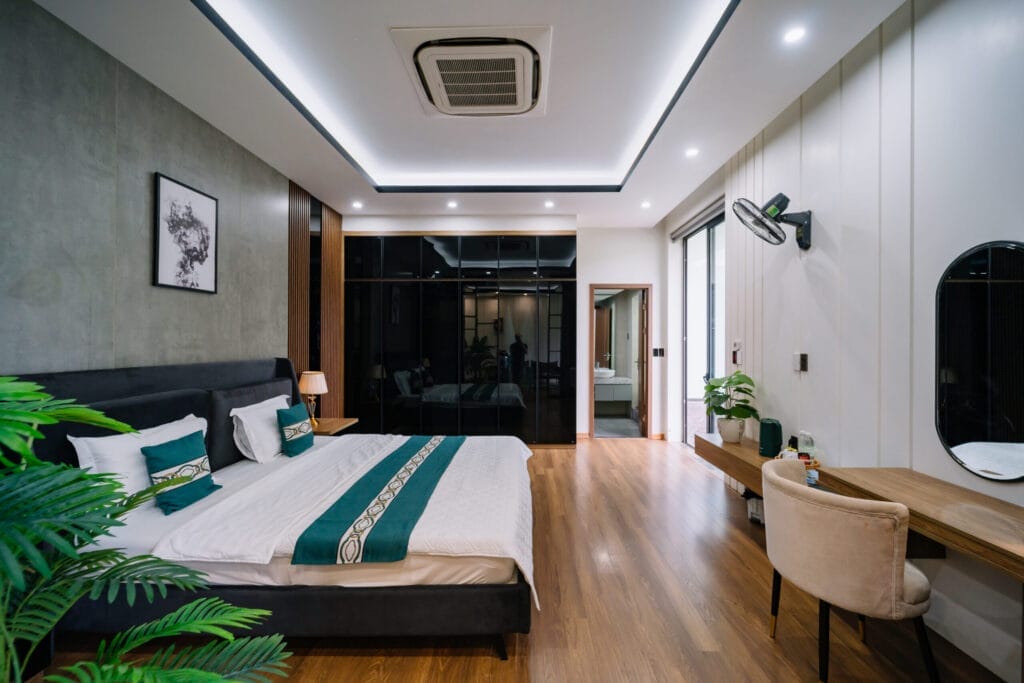
2.2.5. Du Gia Village:
Du Gia is a peaceful village in Ha Giang that is increasingly becoming a popular stop for those exploring the region. It offers homestay experiences, allowing visitors to stay with local families and immerse themselves in the tranquil rural life.
2.2.6. Quan Ba District:
Quan Ba is known for its stunning landscapes, including the famous “Twin Mountains.” The district offers a mix of accommodation options, from guesthouses to eco-lodges, providing a chance to experience the natural beauty of the area.
2.2.7. Homestays in Ethnic Minority Villages:
For a more immersive experience, consider staying in homestays in ethnic minority villages. Thon Tha Village is one such village known for its traditional H’mong earthen houses. This type of accommodation allows you to engage closely with local communities and their way of life.
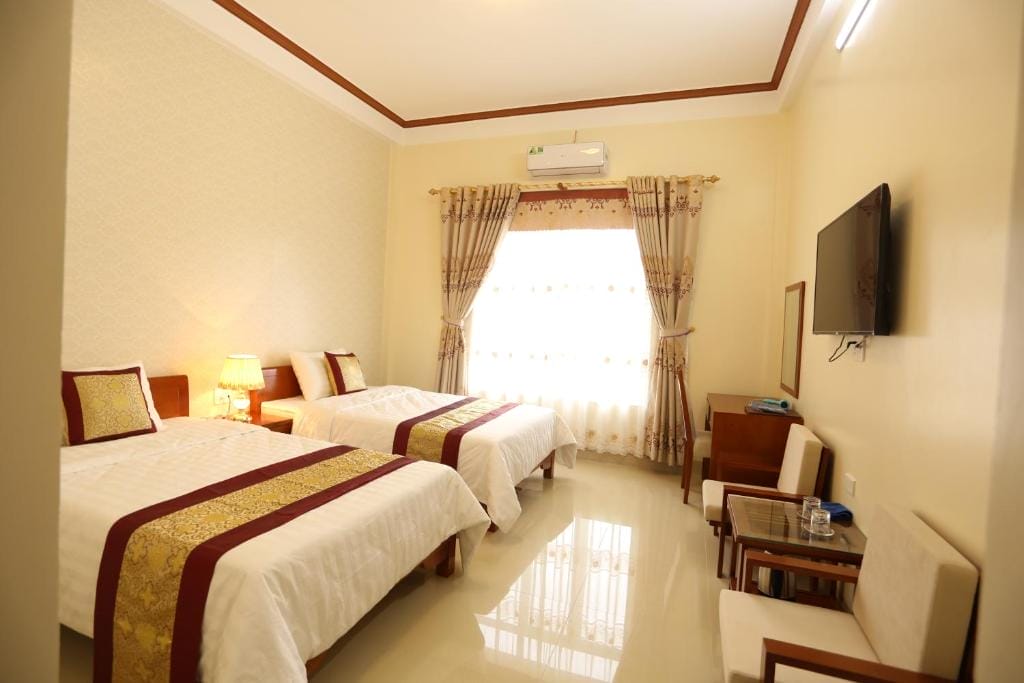
When choosing where to stay in Ha Giang, consider your travel itinerary, whether you’re exploring the Ha Giang Loop or focusing on specific areas. It’s advisable to book accommodations in advance, especially during peak travel seasons. Whether you prefer the convenience of a town, the tranquility of a village, or the cultural richness of a homestay, Ha Giang offers a range of options to suit various preferences.
2.3. Where to stay in Cao Bang
Cao Bang is a province located in the northeastern part of Vietnam, known for its scenic landscapes, diverse ethnic cultures, and historical significance. Cao Bang offers a range of accommodation options, particularly in Cao Bang City, which serves as a central hub for exploring the province’s attractions. Here are some areas and types of accommodations to consider when planning your stay in Cao Bang:
2.3.1. Cao Bang City:
Cao Bang City, as the provincial capital, has the most diverse range of accommodations, including hotels, guesthouses, and budget options. Staying in the city provides convenience in terms of access to restaurants, markets, and transportation.
2.3.2. Ban Gioc Town:
If you plan to explore the Ban Gioc Detian Falls extensively, you might consider staying in Ban Gioc Town. Accommodations in this area are more limited compared to Cao Bang City, but it provides closer proximity to the famous waterfall.
2.3.3. Quang Uyen District:
Quang Uyen is a district in Cao Bang known for its natural beauty and ethnic minority communities. If you are interested in a more rural experience, there might be homestay options available in villages within Quang Uyen. Check with local tourism offices for recommendations.
2.3.4. Pac Bo Area:
If you’re interested in exploring the historical sites associated with Ho Chi Minh and the Vietnam War in the Pac Bo area, inquire about accommodations in this vicinity. Local guesthouses may be available to accommodate visitors.
When choosing where to stay in Cao Bang, consider your travel itinerary and the attractions you plan to explore. Cao Bang City provides the most comprehensive range of amenities and accommodations, making it a practical base for many travelers. However, if you wish to immerse yourself in more remote and rural experiences, consider exploring homestay options or accommodations closer to specific attractions like Ban Gioc Detian Falls or Ba Be National Park. As always, it’s a good idea to book accommodations in advance, especially during peak travel seasons.
2.4. Where to stay in Mu Cang Chai of Yen Bai – Vietnam
Mu Cang Chai is a district located in the Yen Bai Province of northern Vietnam. This region is famous for its breathtaking terraced rice fields, which are recognized as one of the most beautiful landscapes in Vietnam. Mu Ca. ng Chai offers a range of accommodation options, mainly in the form of guesthouses, homestays, and a few hotels. The availability of accommodations might vary, so it’s advisable to plan and book in advance, especially during the peak tourist seasons. Here are some areas and types of accommodations to consider when staying in Mu Cang Chai:
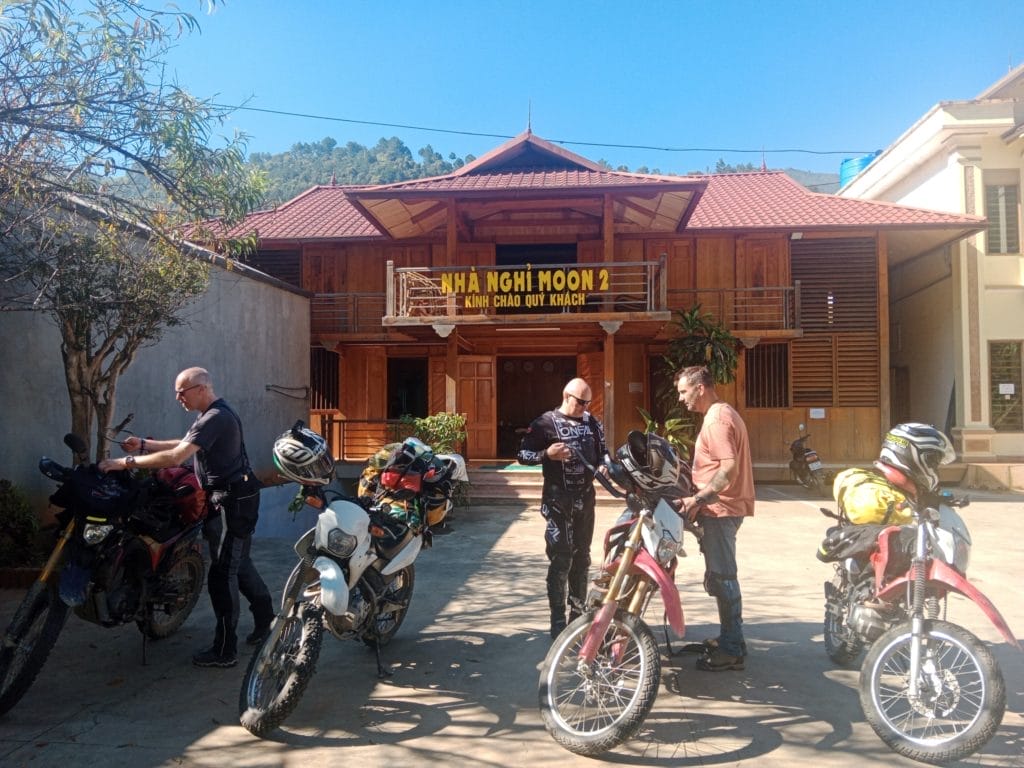
2.4.1. Mu Cang Chai Town:
Mu Cang Chai town itself has several guesthouses and small hotels. This is a convenient option for those who prefer staying closer to amenities such as restaurants and local markets.
2.4.2. Tu Le Town:
Tu Le is a small town near Mu Cang Chai known for its picturesque landscapes and terraced fields. It also offers accommodation options, including guesthouses and homestays.
2.4.3. Homestays in Villages:
For a more immersive experience and to connect with the local culture, consider staying in homestays in the villages surrounding Mu Cang Chai. Villages like Lim Mong and Che Cu Nha offer homestay opportunities where you can experience the daily life of ethnic minority communities.
2.4.4. Che Cu Nha Village:
Che Cu Nha is known for its terraced fields and has some homestay options. Staying in this village provides an authentic experience and allows you to explore the surrounding landscapes.
2.4.5. Lim Mong Village:
Lim Mong, a H’mong ethnic village, also offers homestay accommodations. Staying here provides an opportunity to engage with the local community and witness their traditional practices.
2.4.6. Khau Pha Pass Area:
As Khau Pha Pass is a popular spot for its panoramic views, some accommodations might be available in the vicinity. Staying in this area allows you to be close to one of the most scenic mountain passes in Vietnam.
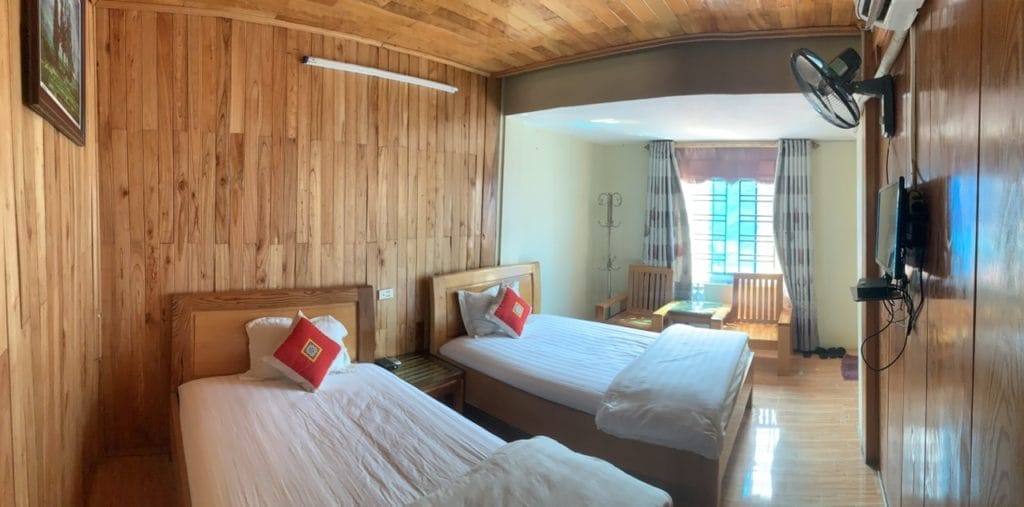
When choosing where to stay in Mu Cang Chai, consider your preferences for proximity to attractions, the type of experience you want, and your budget. Accommodations in this region may range from basic guesthouses to more traditional homestays. Regardless of where you stay, the warmth and hospitality of the local people contribute to the overall charm of Mu Cang Chai.
2.5. Where to stay in Moc Chau of Vietnam?
Moc Chau is a plateau region located in the northern part of Vietnam, specifically in the Son La Province. Known for its stunning landscapes, diverse ethnic cultures, and pleasant climate, Moc Chau has become a popular destination for nature lovers and those seeking a tranquil retreat. Moc Chau offers a variety of accommodation options to suit different preferences, ranging from budget-friendly guesthouses to more comfortable hotels. Here are some areas and types of accommodations to consider when planning your stay in Moc Chau:
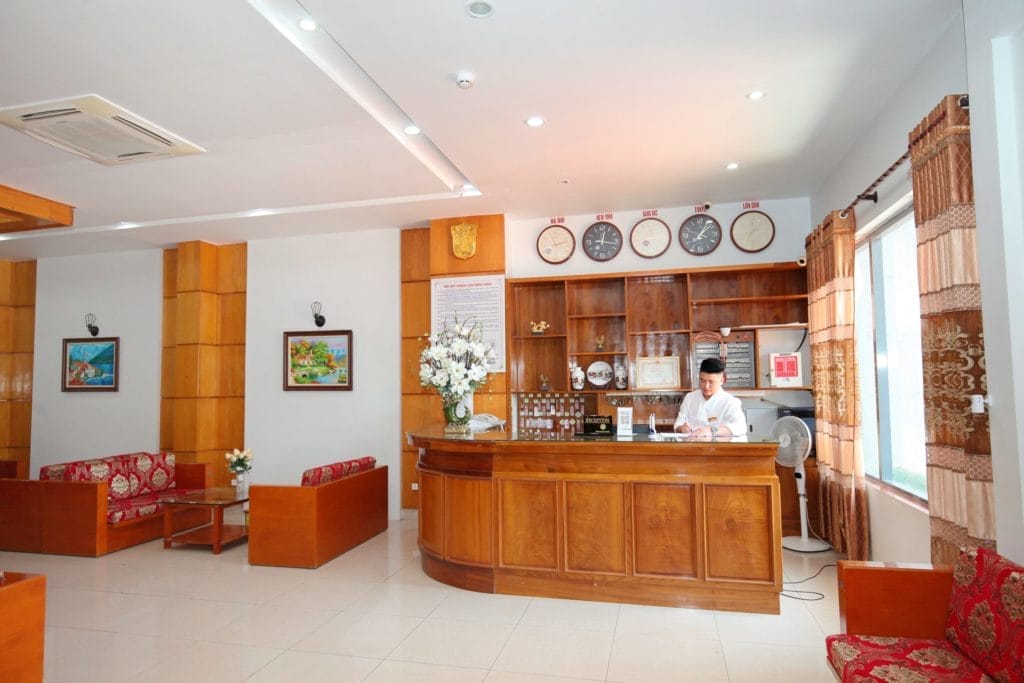
2.5.1. Moc Chau Town:
Moc Chau Town itself has a range of accommodations, including hotels and guesthouses. Staying in the town provides convenience in terms of access to local amenities, markets, and restaurants.
2.5.2. Near Flower Gardens and Tea Plantations:
If you’re particularly interested in exploring the flower gardens and tea plantations, consider accommodations located in close proximity to these attractions. This might offer scenic views and easy access to the natural beauty of Moc Chau.
2.5.3. Homestays in Ethnic Minority Villages:
For a more immersive experience and a chance to connect with local cultures, consider staying in homestays in ethnic minority villages around Moc Chau. This allows you to experience the daily life of communities like the Thai, H’mong, and Muong.
2.5.4. Ban Ang Village:
Ban Ang is known for its pine forest, and some accommodations might be available in or near the village. Staying in this area provides a tranquil atmosphere and proximity to the Ban Ang Pine Forest.
2.5.5. Moc Chau Plateau Resort Area:
The Moc Chau Plateau Resort area may have more upscale accommodations, including resorts that offer additional amenities such as spas and recreational facilities. This option is suitable for those seeking a more luxurious stay.
2.5.6.Thac Moc Suong (Moc Suong Waterfall) Area:
If you plan to explore Thac Moc Suong, consider accommodations in the vicinity. This area might offer a serene environment and easy access to the waterfall.
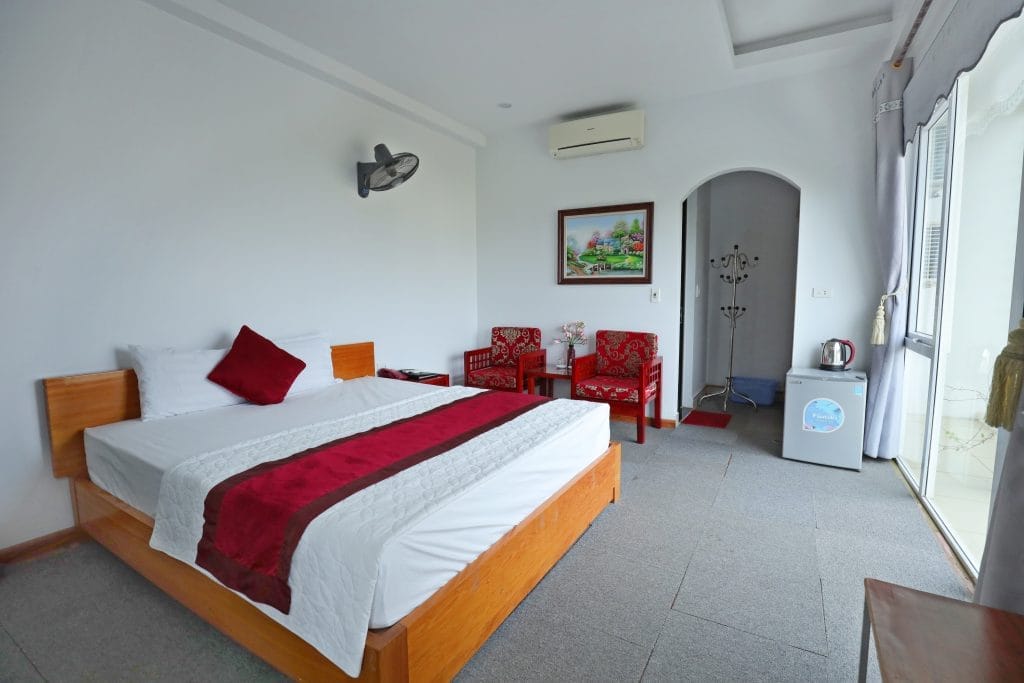
When choosing where to stay in Moc Chau, consider your travel itinerary, the attractions you plan to explore, and your preferences for the type of accommodation. Moc Chau has a range of options, from basic guesthouses that cater to budget travelers to more upscale resorts for those seeking additional amenities. It’s advisable to book accommodations in advance, especially during peak travel seasons, to secure your preferred choice.
2.6. Where to stay in Mai Chau?
Mai Chau Valley is a picturesque destination located in Hoa Binh Province, approximately 135 kilometers southwest of Hanoi, Vietnam. Nestled amidst lush green mountains, this valley is renowned for its stunning landscapes, rich cultural diversity, and opportunities for outdoor activities.
Mai Chau offers a range of accommodation options, from traditional homestays to more modern hotels. The choice of where to stay depends on your preferences, budget, and the type of experience you’re seeking. Here are some areas and types of accommodations to consider when staying in Mai Chau:
2.6.1. Lac Village:
Lac Village is one of the main villages in Mai Chau and offers a range of accommodations, including traditional stilt houses that have been converted into homestays. Staying in Lac Village provides an authentic experience and easy access to local activities.
2.6.2. Pom Coong Village:
Pom Coong Village is another charming village with homestay options. This area offers a peaceful environment and an opportunity to engage with the local community.
2.6.3. Mai Chau Town:
Mai Chau Town itself has a variety of accommodations, including hotels and guesthouses. Staying in the town provides access to amenities, restaurants, and shops.
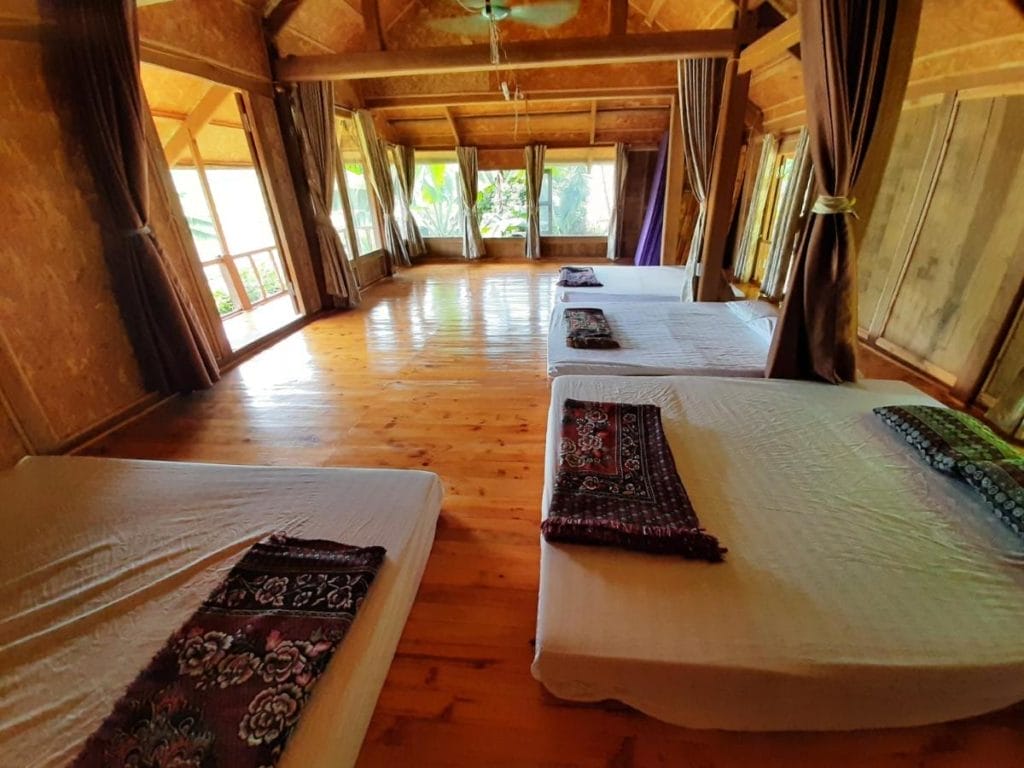
2.6.4. Ban Lac Village:
Ban Lac is known for its traditional stilt houses and cultural authenticity. Accommodations in this village often include homestays, allowing visitors to experience daily life in a local community.
2.6.5. Nearby Villages and Rice Fields:
If you prefer a more secluded experience, consider accommodations situated near the rice fields and smaller villages surrounding Mai Chau. This option may offer a quieter environment and a closer connection to nature.
2.6.6. Homestays:
Many accommodations in Mai Chau are traditional homestays, providing an opportunity to stay with local families, enjoy home-cooked meals, and immerse yourself in the local culture. Homestays are an excellent choice for those seeking an authentic experience.
2.6.7. Eco-lodges and Resorts:
Some eco-lodges and resorts in and around Mai Chau offer more upscale accommodations with additional amenities. These options are suitable for those looking for a comfortable stay while still being close to nature.
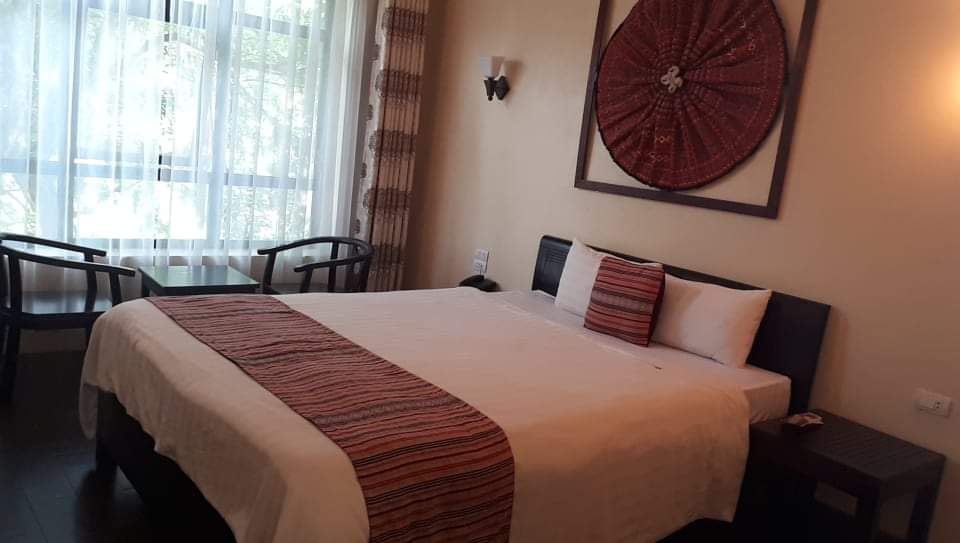
When choosing where to stay in Mai Chau, consider your travel itinerary, the type of experience you want, and your budget. If you’re interested in cultural immersion and interacting with the local community, homestays in traditional villages like Lac Village or Ban Lac Village are highly recommended. However, if you prefer more modern amenities, Mai Chau Town or nearby eco-lodges and resorts may be a better fit. Regardless of where you choose to stay, the tranquil beauty of Mai Chau Valley is sure to leave a lasting impression.
———————————————————————————–
To get more details on many other Cross-Border Motorbike Tours from Vietnam to Laos, you can visit here. Otherwise, you can see more our best Vietnam Motorbike Tours and Laos Motorbike Tours.
Of course, you can also follow us at this following youtube channel to see what we’re doing for our guests:
https://www.youtube.com/@indochinamotorbiketours

